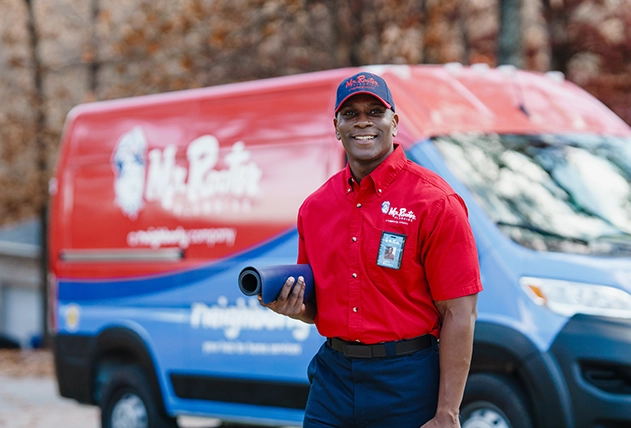The green technology and sustainability market is expected to grow 24.3% from 2020 to 2027, reaching a projected $48.36 market size by 2027. The surge of environmental awareness in both consumer and industrial interest has driven the growth of the market. This includes considerations for green building and plumbing innovation and utilizing tech to create lasting impacts for reducing water waste and supporting greener living and working environments.
Smart plumbing is changing the industry, from early leak detection to smart appliances, and greywater recapture systems, this article will detail 5 plumbing trends that can make an impact both in both residential and commercial spaces.
- Brain Pipes and Leak Detection Systems
According to the EPA, leaks in an average household can account for nearly 10,000 gallons of water waste per year, and that over 1 trillion gallons of water are wasted across the U.S. due to minor leaks.
Leak detection and repair is a crucial combattant to water waste and can be supported by brain pipes and smart leak detection systems. These systems typically need a plumber’s expertise to install and diagnose critical placement and use. The brain pipe and leak detection systems work by monitoring the plumbing of the home and detecting leaks, or breaks in the plumbing. Brain pipes and other digital leak detection tools not only inform the residential or commercial building owner but can also pinpoint the exact location needed for immediate repair.
- Green Components
Building managers and homeowners can also choose to upgrade and install green components and high-tech plumbing solutions that include installing toilets with high efficiency and a low flush capacity, as well as replacing showerheads and faucets that reduce water consumption through lowered pressure.
Common areas in the home and office for green faucet installation and replacement include:
- Kitchen faucet replacements.
- Breakroom faucet replacements.
- Bathroom faucet replacements.
- Laundry room faucet replacements.
Additionally, showerheads in homes, office buildings, and in gyms can be replaced with WaterSense alternatives that can reduce water use by half a gallon or more per minute. While this may seem like incremental water saving, it adds up over time as nearly 1.2 trillion gallons of water are used annually in the United States just with showering.
- Smart Appliances
A great addition to both office and home spaces that are seeking to lower their environmental footprint and water usage are smart appliances. Smart appliances use technology to monitor and manage water usage.
Some of these smart appliances are equipped with technology that links them to the internet, allowing them to send signals to the owner’s app or phone or allowing for digital management from a handheld device. This technology creates the opportunity for users to manage settings, water temperature, water conservation, or even turn off the appliance from any location.
The trending growth of smart appliance use may include the following:
- Installing hot water dispensers or innovative water heaters that can cut heat loss by 24 to 25% and save 7 to 16% on annual water bills.
- Installing and replacing dishwashers with energy and water-efficient dishwashers that can reduce water use by 4 to 6 gallons per load.
- Installing water faucets in commercial buildings that are motion sensored or shut off the water supply after a few seconds to reduce continuous running of water during handwashing.
- Upgrading and installing new models of washing machines that use 13 to 17 gallons of water, rather than older models which may use 26 gallons or more.
- LED Temperature Monitors
Alongside smart appliances is the use of LED temperature monitors. This addition to plumbing technology allows the user to better manage and monitor temperature control. Some LED temperature monitoring fixtures also include a built-in magnet that can generate small amounts of power when the valve is turned on and the water is flowing.
Not only do LED temperature screens and monitors allow for better control of water usage, but they can also help to prevent accidental scalding that may occur from unregulated hot water from a faucet.
- Grey Water Recycling & Smart Irrigation and Sprinklers
Recycling water isn’t necessarily a “new trend”, but there are many innovative approaches to how water is used and recycled. Greywater recycling allows for the water recycling process to occur in residential and commercial spaces, rather than pumping water out to be recycled at a facility.
Greywater recycling in a home or at an office building collects water used in various places — kitchen sinks, dishwashers, washing machines, tubs, showers, etc, and then recycles the water for a different purpose, such as watering a lawn or garden. While some of the contaminants present in greywater recapturing may be unsafe for human consumption, it may be perfectly fine for plants. Some greywater systems may also include filtration devices that can remove minor contaminants from the recaptured gray water.
Studies on more sophisticated greywater systems that recycle water internally with hydraulics — such as recycling cold water from the sink to flush the toilet — could reduce water use from 5.8 to 30.6%.
Additionally, updating and repairing sprinkler systems can create opportunities to integrate smart irrigation trends such as weather-based controllers. Weather-based controllers, referred to technically as evapotranspiration (ET) controllers monitor weather data, historic data, and onsite data to control and adjust water usage in irrigation schedules. These water sensing controllers can save a residence up to 15,000 gallons of water annually.
By incorporating smart plumbing trends for both home and commercial spaces, property owners have the opportunity to not only impact their environmental footprint but to save money in the long run by reducing water usage and impact.
